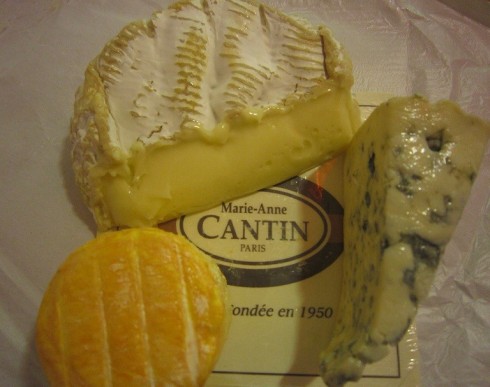Last night in the gym, somewhere between the three-knee repeater and that tricky turnkey step, it occurred to me that BodyStep was to pasteurised milk cheese what freestyle step was to raw milk cheese.
Well, what do you think about in the gym?
Anyway, this thought was so profound, I nearly fell off the step. Allow me to explain. BodyStep, like BodyPump, BodyCombat and a number of other made up compound words, is a standardised fitness class developed by Les Mills International, a New Zealand company, available to gym goers in 90 different countries. It means that it doesn’t matter whether I’m in Manhattan, Milan, Mexico City or right here in Melbourne, one of their 90,000 certified instructors will teach me pretty much the same class.
By taking the choreography and music of the routine out of the hands of the local instructor, the Les Mills classes are examples of globalised, homogenised products, examples of what some academic types call the McDonaldization of the world. And it has its benefits. It’s been developed and tested by experts so it’s effective and safe. Also, as a gym goer, I know exactly what I’m getting and that’s ok because, overall, I think it’s a pretty good experience, though, sometimes, it can be quite boring too. Now, to alleviate this boredom, there is some local variety, as obviously the instructors bring their own personalities to the job. For example, the woman who took my class last night barely spoke and used mime to demonstrate what she wanted us to do. It was weird, though nice not to listen to “Strong body, strong mind” and all those other stupid things they yell at you while you’re sweating away as only a pig should. Once a set routine has been in circulation for a while, the instructor is allowed to mix up the songs so they can make a new routine out of old routines, also demonstrating a certain degree of local creativity. These local differences are like McDonald’s serving specific menu items in different places, like the Teriyaki McBurger in Japan or the Lakse wrap served in Finland.
Now, here’s the cheese bit: It’s like pasteurised milk cheese because by making cheese with pasteurised milk you kill off not just any bad stuff, you’re also killing off much of the local flavour of the milk, what the French call the terroir. Though it should be noted that the degree to which the local flavour is destroyed by pasteurisation is much debated and contested. Still, just as your local BodyStep instructor can’t decide the actual moves or music of your routine, your cheese is without much of the bacteria that make it “of the place”. The result is your cheese is now a standardised and safe product. Sure, just like your instructor can teach in an individual style or mix up different routines, you can introduce local variety by following different methods and producing different styles, and while this might result in a perfectly satisfying cheese, it’s not likely that such a cheese would ever surprise you with its flavours or, conversely, be really bad.
Speaking of really bad, on Tuesday I took a freestyle step class for the first time with Pierre. Dear, sweet, French Pierre, who before the class promised me it would be “tres” fun, came up with the routine all by himself. And while Pierre was a “local” instructor and therefore came up with a “local” routine, it’s worth pointing out that he is also French, and that would’ve also factored into what he came up with. Now Pierre’s class was difficult. Really difficult. Pierre himself fell off the stage at one point, eliciting gasps of concern from most of the class but, I’m ashamed to say, a gleeful smirk from me – that will teach him for putting together the world’s most convoluted step routine! Pierre’s class was just too challenging for most of the participants and it was not safe. Kind of like a bad raw milk cheese – sure it’s made with local, individual flavour, as the milk has not been pasteurised, but it’s not safe and could result in sickness, even death. However had Pierre’s class been better, it would’ve been like the raw milk Camembert I ate in Paris earlier this year – not just safe to eat, but unexpected, exciting and hitting taste heights I had not thought possible.
While I’m on the topic, I feel Zumba, the class that urges you to “ditch the workout, join the party”, is worthy of mention. It’s interesting not so much because it’s another globalised format, but because of the way it appropriates the dances and traditions of other cultures to create a new form. In this way, it acts like a cultural translator, making it possible for an Italian-Australian woman in Melbourne to try different styles. Nothing is sacred, one minute you’re salsa-ing like a Latin goddess with skin the colour mocha, as Ricky Martin might say, the next you’re pretending to wave away a bull, matador-style and then all of a sudden you’re jumping around like a Bollywood princess trying to look beguiling, but really looking like you just ate a really hot curry. Zumba, however, is problematic for me to think about at any great length for the simple reason that it sounds far too much like Zumbo, which reminds me of cake, something I feel drastically in need of after all this gym talk… macaron anyone?
